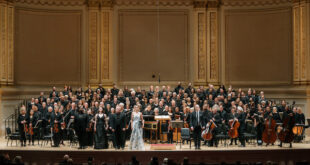Two very interesting RCA Italiana jazz album reissues are due for release from Ishtar Records’ Schema Rearward label, both reflecting the far-reaching influence of the patently American genre. Both albums, Quartetto Di Lucca’s 1962 Quartetto and Piero Umiliani’s 1957 Da Roma a New York, would be difficult to distinguish from what American musicians were putting down. Unlike some jazz from abroad, these ensembles don’t seem to be looking to differentiate themselves from their models. If there is anything overtly Italian about them, it is well hidden.
Whether this is good thing or not is debatable, but one thing for sure if you like standard jazz played with creativity, these are albums that deliver the goods.
Quartetto Di Lucca – Quartetto
Quartetto Di Lucca started as a quintet back in 1957. In 1959 they played for a Chet Baker tour in Italy. It became a foursome after its guitarist left in 1961. Emulating a crew like the Modern Jazz Quartet, they are comprised of Vito Tommaso on piano, Antonello Vannucchi on vibes, Giovanni Tommaso on bass, and Giampiero Giusti on drums.
The album, available as a seven-track LP and a 10-track CD with three bonus tunes, includes some original material from the Tommasos and Vannucchi: “Gabry,” an homage to West Coast jazz, and “Estate ’61,” a traditional blues, are good illustrations of the band’s sensibility. They do effective interpretations of “A Night in Tunisia” and “Like Someone in Love,” but the real gem on the album is their arrangement of the classic “Lullaby of Birdland.”
Piero Umiliani – Da Roma a New York
Piero Umiliani, working on a set of 10 original compositions in an eight-piece ensemble, has a much bigger sound, well described in the newly-translated Italian liner notes. Contemporary jazz artists of the day, Umiliani explained, “are working in a language that, while it doesn’t ignore the teachings of modern symphonic music, puts more emphasis on the eternal fundamentals of jazz—rhythm, swing and modality.” His music, he points out focuses on a “good sound and effective rhythm.” If that’s what he was after, that’s what he got.
His ensemble includes five horns and a traditional rhythm section, and although the album only runs a little over a half hour, it includes 10 dynamic pieces. Beginning with the title song, it moves into “La Fanciulla Dai Capelli Di Nylon,” a riff on Debussy’s “The Girl With the Flaxen Hair.” “Blues For Tony Sciacca” is dedicated to clarinetist Tony Scott. “Vasi A Samos,” he tells us in his extensive notes, is a blues in the style of Shorty Rogers. The title is the Italian equivalent of “bringing coal to Newcastle,” the artist’s joking reference to the idea of bringing Italian jazz to American audiences.
And while there may be some truth to that, it is also true that you can never have too much good music. Whether Quartetto or Da Roma a New York, this is music that deserves to be preserved and appreciated.
[amazon template=iframe image&asin=B00JEP0GBU,B00JEP0F7U] Blogcritics The critical lens on today's culture & entertainment
Blogcritics The critical lens on today's culture & entertainment


